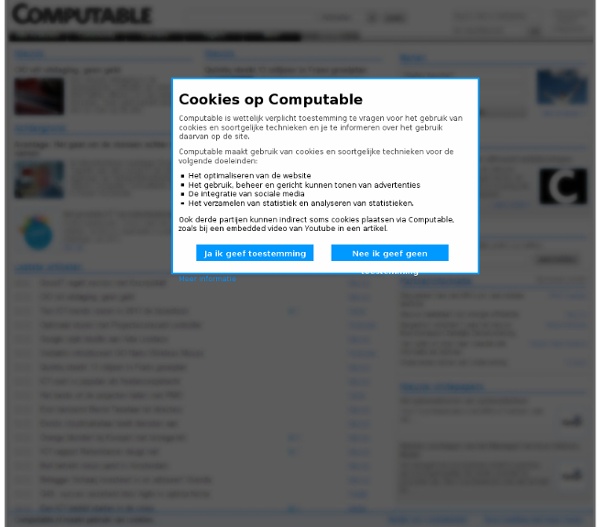Inzet van BTO voor de optimalisatie van SOA

Vijf principes voor succesvolle SOA-implementatie
De keuze voor SOA is ingrijpend, maar welk fundament moet er zijn of komen om tot een succesvolle SOA-implementatie te komen? Op basis van 100 Case Studies zijn de vijf belangrijkste eisen gedefinieerd, die uitgebreid worden toegelicht in deze whitepaper. Type Whitepaper Datum juli 2008 Taal Bedrijf Onderwerpen: Afdelingen Architectuur voor de toekomstVertaling IT naar BusinessprocessenImpact en verandering organisatieSchaalbaarheid infrastructuurHandvaten voor operationeel overzicht IBM Global Services April 2008 Five best practices for deploying a successful service-oriented architecture Leveraging lessons learned from the IBM Academy of Technology Five best practices for deploying a successful SOA Executive Summary Today's innovative market leaders are in the forefront of implementing advanced business applications--leveraging industryspecific solution frameworks supported by a service-oriented architecture (SOA).
Service-oriented architecture
See also the client-server model, a progenitor concept A Service-Oriented Architecture (SOA) is a design pattern in which software/application components provide services to other software/application components via a protocol, typically over a network and in a loosely-coupled way. The principles of service-orientation are independent of any vendor, product or technology.[1] A service is a self-contained unit of functionality, such as retrieving an online bank statement.[2] By that definition, a service is a discretely invokable operation. Services can be combined to provide the complete functionality of a large software application.[3] A SOA makes it easier for software components on computers connected over a network to cooperate. Definitions[edit] A paradigm for organizing and utilizing distributed capabilities that may be under the control of different ownership domains. The Open Group's definition is: Overview[edit] SOA framework[edit] Design concept[edit] Principles[edit]
Introduction to Service-Oriented Architecture
Introduction to Service-Oriented Architecture Changing markets, increasing competitive pressures, and evolving customer needs are placing greater pressure on IT to deliver greater flexibility and speed. Today, every organization is faced with predicting change in a global business environment, to rapidly respond to competitors, and to best exploit organizational assets for growth. In response to these challenges, leading companies are adopting service-oriented architecture (SOA) to deliver on these requirements by overcoming the complexity of their application and IT environments.. SOA provides an enterprise architecture that supports building connected enterprise applications to provide solutions to business problems.
Blog » SOA
I read a lot about Service Oriented Architectures (SOA) and most of the articles start off the same way: “Most companies fail and here are 10 reasons why they fail”. Personally, I would rather focus on “How to succeed at SOA without really trying”, but the truth of the matter is that most companies do fail at SOA and they fail for the same reason, which is that they treat SOA as another technology implementation project and it’s not So if SOA is not about technology, then what is it? Before answering that vital question, it is useful to first look at why companies even bother with SOA. If we set the stage with a business context, I think some of this makes more sense. Many companies, either through acquisition or through the independent actions of independent divisions produce a complex technology landscape of independent silos. The first pressure on the architecture is usually for integration. But to truly get agility, software needs to release quickly. Okay, maybe I am a bit naïve.
Service-oriëntatie
Service-oriëntatie, vertaling van Service-oriented architecture (SOA), is een architectuurmodel, geen technologie op zich. Centraal bestaat een SOA-opgebouwd systeem uit servicecontracten. Hierbij is sprake van afnemers van diensten en leveranciers. Kenmerken[bewerken] Kenmerkend voor de diensten (en contracten) is: SOA en software[bewerken] De SOA-principes zijn al decennia bekend binnen de softwareontwikkeling. SOA Governance[bewerken] SOA Governance bestaat in de basis uit drie onderdelen: Eigenaarschap van diensten (vaststellen van verantwoordelijkheden);Levenscyclus van diensten: de identificatie van een nieuwe (versie van) een dienst, tot en met de dood van een dienst;Funding-model: wie betaalt hoeveel voor wat? ESB[bewerken] Enterprise service bus (ESB). Voordelen[bewerken] Er zijn verschillende voordelen van een SOA aanpak: Literatuur[bewerken] IBM Systems Journal edition on SOANorbert Bieberstein et al.
Related:
Related:



